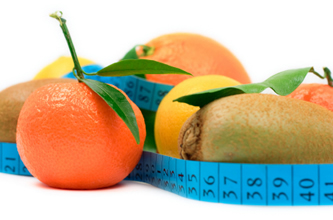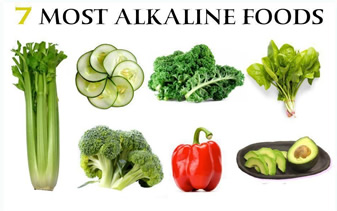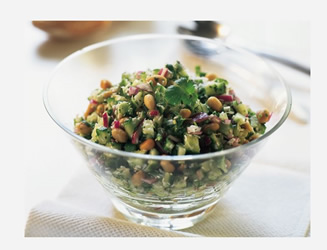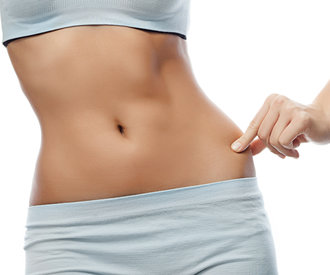It certainly won’t come as a big shock to find that people who lose weight, even successfully will struggle to keep it off in the long term. This is caused in part by our own body’s and their ability to fight back whenever we lose weight, trying to regain the level of fat reserves we had originally. Another factor that seriously impacts progress is our body’s own resistance to weight loss, given that fat cells send out hormonal signals indicating hunger whenever they begin to shrink. These two things can be a nightmare for people that try to lose weight and keep it off permanently. While it’s true that eventually our bodies to back to a more normal hunger level, research has shown this can take years to occur.
 A recent study examined just this problem, finding that individuals who continue to engage in modified diet and exercise programs are more successful long term. As a result, most physicians and clinicians have advised people to maintain a “new lifestyle” rather than just a temporary fix down the road. If a person thinks about a change as something that will remain with them for “life” they are far less likely to fall into these patterns that typically lead to failure or going from “crash diet” to crash diet.
A recent study examined just this problem, finding that individuals who continue to engage in modified diet and exercise programs are more successful long term. As a result, most physicians and clinicians have advised people to maintain a “new lifestyle” rather than just a temporary fix down the road. If a person thinks about a change as something that will remain with them for “life” they are far less likely to fall into these patterns that typically lead to failure or going from “crash diet” to crash diet.
Yet, there was a lot of recent research seeing if this worked and how it worked. Though the original findings that this sort of behavior does lead to better outcomes. Though there’s tremendous emphasis on behavioral approaches to obesity control, motivational forces were found in studies to offer equally profound results. Among dieters, though that also worked on motivational aspects of their weight loss lost considerably more than their counterparts. A novel maintenance program for weight loss focuses on motivational factors that influence behavior.
How our Thoughts and Motivations Impact our Success
It probably doesn’t come as much of a surprise to those of us familiar with career goals, educational goals or even personal goals that our motivation and our attitude has a huge impact on whether or not we’re successful. In a recent trial, it was tested whether a motivation-focused protocol could actually succeed. The desire to achieve positive future goals as well as the motivated desire to avoid the bad aspects of weight gain were tested in this study. It was fund out that, among those who have cyclically had issues maintaining weight loss after losing weight, they were able to achieve some excellent outcomes.
The results of this study were indeed quite promising. Among participants, it was found that those with a motivational focus had just as good of long term results as those that were on a “skill-based” maintenance. How is this possible? Well the researchers linked it to a positive reinforcement and continual self-awareness of a person’s situation. By considering the consequences as well as the benefits for a behavior, motivational factors impacted weight loss the same as those concentrating on maintaining a diet or new lifestyle. This offers a tremendously useful outcome, particularly on patients who are resistive to this more common treatment of skill-based changes.
The goals of weight loss hinge upon a variety of factors, including motivational factors and also our ability to adapt to new routines or changes to diet/exercise. Yet this new strategy offers clinicians an alternative method, as not all patients are able to follow a more skill based approach. The fact that outcomes are similar offer a lot for people who struggle to lose weight and continually battle the ups and downs of weight loss year after year.
 After one month of starting the diet he later called “VB6”, he had lost 15 pounds. Can you imagine? That kind of weight loss is practically unheard of with any traditional diet or exercise program. Yet Bittman did it in a single month, and kept it off. After two months his cholesterol and blood sugar levels were normal again, and his sleep apnea which he struggled with for years had disappeared altogether. After four months he had lost almost all the weight. Bittman noted that he just wanted to “see what happened” and wasn’t expecting these sorts of results. Yet, once he cut out the processed foods and sodas (aka empty calories) he found himself feeling so much better. In doing so, he cut out at least 2000 calories from his diet, and wasn’t even as hungry as he used to be. “Processed” foods as he calls them, are no joke to our bodies. They contain a plethora of harmful fats, carbohydrates and calories.
After one month of starting the diet he later called “VB6”, he had lost 15 pounds. Can you imagine? That kind of weight loss is practically unheard of with any traditional diet or exercise program. Yet Bittman did it in a single month, and kept it off. After two months his cholesterol and blood sugar levels were normal again, and his sleep apnea which he struggled with for years had disappeared altogether. After four months he had lost almost all the weight. Bittman noted that he just wanted to “see what happened” and wasn’t expecting these sorts of results. Yet, once he cut out the processed foods and sodas (aka empty calories) he found himself feeling so much better. In doing so, he cut out at least 2000 calories from his diet, and wasn’t even as hungry as he used to be. “Processed” foods as he calls them, are no joke to our bodies. They contain a plethora of harmful fats, carbohydrates and calories. During each phase, besides phase three, the user continues to take HCG daily. This means at least 125 IUs of the hormone, in order for it to be truly effective. The HCG diet provides resounding results, with the average person losing between 30 to 40 pounds of fat over the course of the diet. It’s a tremendously effective treatment which is why it’s grown so popular over the years.
During each phase, besides phase three, the user continues to take HCG daily. This means at least 125 IUs of the hormone, in order for it to be truly effective. The HCG diet provides resounding results, with the average person losing between 30 to 40 pounds of fat over the course of the diet. It’s a tremendously effective treatment which is why it’s grown so popular over the years.
 One of the reasons the Ornish diet works is much the same as the reason the Paleo or “Caveman” diet works (or the Mediterranean diet for that matter). By removing unnatural and processed foods from our diet, we are able to avoid a lot of complex carbohydrates and fats that were not part of our evolutionary staple diet. Once they are removed, our body’s metabolism greatly increases, allowing us to more easily process the foods we eat, and also burn more fat. This has been known for a few years, perhaps even a decade or more, but these diets certainly can provide results that are positive given the overall goals underlying these food choices.
One of the reasons the Ornish diet works is much the same as the reason the Paleo or “Caveman” diet works (or the Mediterranean diet for that matter). By removing unnatural and processed foods from our diet, we are able to avoid a lot of complex carbohydrates and fats that were not part of our evolutionary staple diet. Once they are removed, our body’s metabolism greatly increases, allowing us to more easily process the foods we eat, and also burn more fat. This has been known for a few years, perhaps even a decade or more, but these diets certainly can provide results that are positive given the overall goals underlying these food choices. Many modern diseases experienced by mankind, such as autoimmune diseases or cardiovascular disease, were caused by this change in diet. This is what the Paleo diet is designed to remedy and correct. The goal here is not to duplicate the diet that a “caveman” would have had thousands of years ago. Rather it’s to create a diet that returns to these foods we had eaten in the past, but in a modern setting. There is no “one-size-fits-all” solution for this diet, and we do not advocate one whatsoever. Though some Paleo dieters do recommend stark changes and regression to this form of diet in an absolute sense, it’s not typically advisable to do so. Some Paleo dieters cannot imagine not eating dairy, and with particular changes to your diet it’s possible to include these foods into the program without violating the tenants.
Many modern diseases experienced by mankind, such as autoimmune diseases or cardiovascular disease, were caused by this change in diet. This is what the Paleo diet is designed to remedy and correct. The goal here is not to duplicate the diet that a “caveman” would have had thousands of years ago. Rather it’s to create a diet that returns to these foods we had eaten in the past, but in a modern setting. There is no “one-size-fits-all” solution for this diet, and we do not advocate one whatsoever. Though some Paleo dieters do recommend stark changes and regression to this form of diet in an absolute sense, it’s not typically advisable to do so. Some Paleo dieters cannot imagine not eating dairy, and with particular changes to your diet it’s possible to include these foods into the program without violating the tenants. The fact of the matter is, how loose your skin becomes once you lost weight is dependent on many factors including: the total amount of weight lost, how old you are (younger skin is more resilient), and how many times you’ve lost weight and gained it previously. The faster you lose weight the shorter the time your skin has to adapt to the change. There are many surgical options out there, such as a tummy tuck or a body life, but these are expensive and leave many scars. There are actually many natural options out there that can help instead. Using proven skin tightening treatments, and losing weight in a controlled manner can go a long way to help cut down on the folds of skin, though it’s not likely they will disappear entirely.
The fact of the matter is, how loose your skin becomes once you lost weight is dependent on many factors including: the total amount of weight lost, how old you are (younger skin is more resilient), and how many times you’ve lost weight and gained it previously. The faster you lose weight the shorter the time your skin has to adapt to the change. There are many surgical options out there, such as a tummy tuck or a body life, but these are expensive and leave many scars. There are actually many natural options out there that can help instead. Using proven skin tightening treatments, and losing weight in a controlled manner can go a long way to help cut down on the folds of skin, though it’s not likely they will disappear entirely.